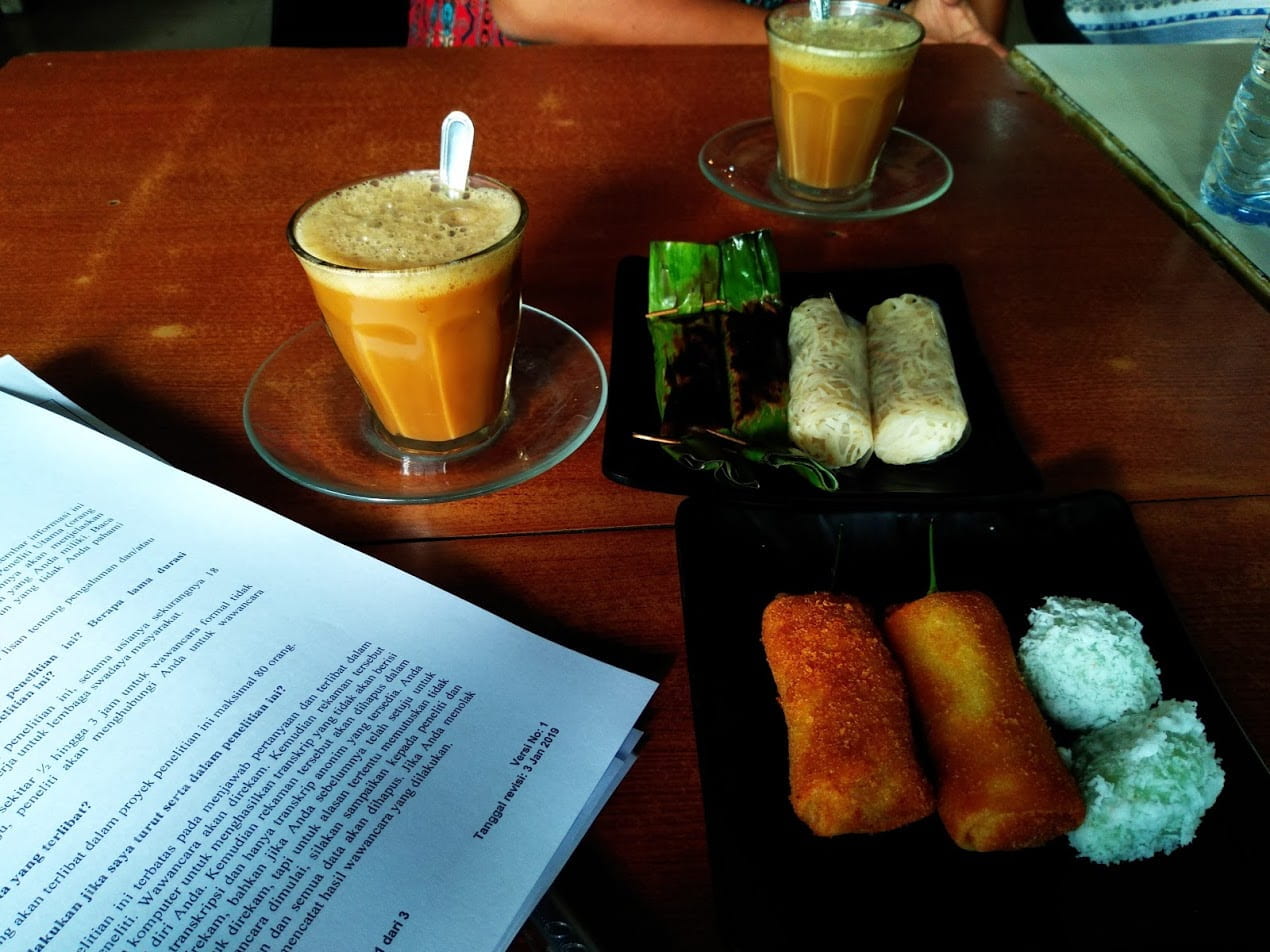The causes of civil conflict requires understanding why people would join an armed rebel group in the first place. I explore this in the case of Aceh, where an armed separatist group, GAM (Gerakan Aceh Mederka), waged war against the Indonesian state for 30 years until Aceh was granted special autonomy status in 2005. How was GAM able to recruit Acehnese to join its cause? If GAM were not successful, GAM would simply not survive as an organization. This is especially the case for GAM, a separatist organization that depended on its popular legitimacy for resources, recruits, and civilian support to function. Part of GAM’s success was its ability to naturalize the idea that Acehnese is a distinct nation that deserves independence from Indonesia. Yet, not everyone who supported Acehnese independence decided to join GAM. While some picked up arms to resist the Indonesian state, others chose to use non-violence methods as activists. Why did some Acehnese choose to become combatants, yet others become activists?
There are several prevailing theories as to why some people might join a rebel group, or not. These theories do not work well in the case of Aceh. In this blog post, I provide some evidence that suggest that existing theories do not work. Instead, my fieldwork suggests a much simpler explanation: Acehnese chose to become activists or combatants based on the networks they had access to and the skill sets they could offer.
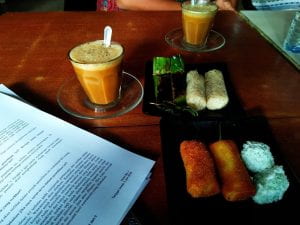
Figure 1. 90 Interviews were conducted over local coffee and snacks
The first common theory is that: joining an armed group is a natural response to relative depravation or because they had experienced abuses by the state. This might seem intuitive: if one is poor enough or has suffered enough, the opportunity cost of risking one’s life in armed conflict is relatively low. One may also seek out violence in order to reclaim a sense of agency. However, many ex-combatants I interviewed were from well-to-do families, educated, and had never experienced violence personally. At the same time, I also had interviewed Acehnese who were poor, lived in highly unequal areas, and who had experienced violence firsthand, and still chose to become activists rather than pick up weapons. Something else must be going on.
A second common political science argument is that: people are persuaded to join a rebel group when political entrepreneurs are able to use propaganda to blame people’s seemingly trivial and petty grievances on the state. Since everyone has petty grievances, we should expect that those who participate in violence to be those who were exposed to propaganda that directed their grievances towards an enemy. In Aceh, it was true that support for Acehnese independence was higher in areas where GAM’s networks were stronger. However, on its own, this theory cannot explain why is it that some pro-independence Acehnese chose to become combatants, whereas other pro-independence Acehnese chose to become activists.
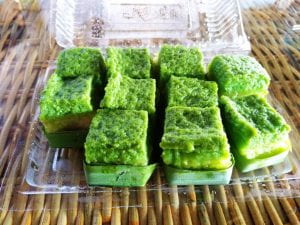
Figure 2. Perks of fieldwork in Aceh: the aroma of pandan/coconut of this snack (butai/buleukat silei in Acehnese) was ARRESTING.
So why would some Acehnese choose to become combatants rather than activists? First, contrary to the way political scientists (and myself) have understood the question of rebel recruitment, many of the respondents I interviewed did not think that the decision to become a combatant or activist were mutually exclusive choices. Many activists supported GAM, and some even wanted to become combatants, describing them as heroes (pelawan). Some activists eventually became combatants, and some combatants eventually became activists (though this change was considerably rarer if one was already black-marked by the Indonesian state). Many interviewees explained to me that violent resistance and non-violent activism were two paths to the same goal. Violence and non-violence were complements, not substitutes. For example, several respondents explained to me how both student activists and GAM combatants would work together to mobilize Acehnese to demonstrate and demand a referendum on Acehnese independence. This not only involved explaining the importance (mensosialisasikan) of the referendum to villages across Aceh, but also included cooperation on smuggling in weapons past military checkpoints into Banda Aceh, where the demonstrations occurred. Some activists also boasted how their campaign against the British sale of Scorpion tanks to Indonesia succeeded because they were able to show they were being used not for external defense, but internally against the people of Aceh. They told me that this was how they supported GAM’s military efforts. Some activists also told me that their activism was only effective because there was an armed struggle to begin with.
So if becoming a combatant and activist were complementary to the cause of Acehnese independence, why did different Acehnese choose different paths? In my estimation, the single two biggest factors that explains why some people chose to become activists and others chose to become combatants were the networks one has access to, and the skills one had.
First, on skills. As mentioned, several activists indeed told me that they were inspired to join GAM. They described to me secret coordination meetings they had with the chief commander, Abdullah Syafi’i, who told them that, given their status as university students (mahasiswa), they would better serve the dream of independence through their activism rather than as combatants. GAM understood that an essential aspect of their struggle was to gain international recognition that Aceh was a sovereign people that had suffered under abuses of the Indonesian state, and the student activism leant GAM’s efforts legitimacy. Because of this, university students were more likely to become activists. Here, education or the status of being educated was a useful skillset for activism. By contrast, it is popularly understood that GAM recruited less educated Acehnese. I was frequently told that this is because GAM would find it difficult ordering university students like soldiers. Nevertheless, even though GAM’s members were disproportionately less educated on average, many of GAM’s high-ranking combatants and early members were significantly over-educated. There were also important roles for educated GAM members. One GAM member described his role as a spokesperson – who provided GAM statements to the press, many of which sounded like the statements put out by student activists, but under the name of GAM. Not all activists were university students either, especially those who were not based in Banda Aceh, but working directly with affected and displaced communities. So skills (or education) can go some way in explaining why some Acehnese joined GAM and others became activists, but there is still some variation left to be explained.
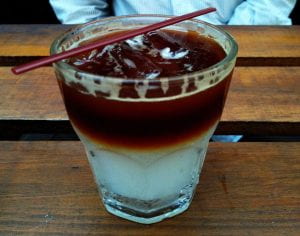
Figure 3. Nira espresso: espresso with water from the branch a species of coconut, ijuk. Incredibly refreshing.
From my interviews, what explains the variation between joining GAM as opposed to joining a student activist group are the net–works one had access to. If one was based in a village along the Northeast coast (GAM strongholds), it would be difficult to access the student activist networks based in the city. But one could easily access or may even have been actively recruited by GAM networks. Likewise, if one was a university student in Banda Aceh, one would naturally have been exposed to or recruited by the student activist networks in the universities. As a stronghold of the Indonesian military, it would also mean that one would have less access to GAM networks. Thus, some ex-combatants told me that they might have joined an activist group had they had the opportunity. Likewise, activists hence would tell me that while they had wanted to join GAM, many simply did not have the opportunity, at least initially. Instead, they were recruited by student activist groups. In fact, many student activists did not start out campaigning independence. Rather, they were part of an Indonesian-wide student network who were rallying to oppose Suharto, Indonesia’s strongman president for 31 years. Almost all these student activists told me that in the years following after Suharto’s fall, the full extent of human rights abuses in Aceh came to light. This prompted many of them to read up on Aceh’s history (typically written by Hassan di Tiro, GAM’s founder), and conclude that independence was the only way to right these wrongs and prevent further abuses. Many of them only considered joining GAM after this point. Some did. But it was typically easier to continue with activism given their education levels, experience doing activism, and networks with other activists.
What are we to learn from this? For scholars of civil conflict, it is important to not think of rebel recruitment primarily as a decision about the use of violence vs non-violence. Many activists who employed non-violent methods understood their actions to be inline with and supportive of combatants who used violence, and many combatants thought likewise of activists. Many activists and combatants understood themselves as Acehnese freedom fighters and part of the same team. These vocational choices were complements, not substitutes.
For aid, human rights, and peace-keeping practitioners, I hope the lesson is not to be suspicious of local activists just because they may be supportive of violent resistance, or that the best way to ameliorate civil conflict is to make it more difficult for potential combatants to network. The Indonesian state attempted this by setting up road blocks all around Aceh (called sweeping operations). This may have been somewhat effective, but occurred at the expense of the civilian population. Such an approach prioritizes the reduction of violence at all costs (zoe), but ends up securitizing civilian life to point that life becomes meaningless as well (bios).
In my next blogpost, I suggest that questions concerning violence vs non-violence is based on a normative bias that requires unpacking.
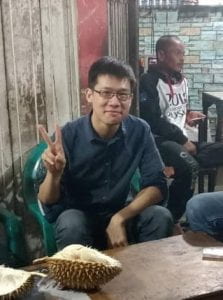 By Amoz JY Hor, Sigur Center Summer 2019 Field Research Grant Fellow. Amoz is a Political Science Ph.D. student at George Washington University. He researches on the emotional practices of violence and humanitarianism in Indonesia.
By Amoz JY Hor, Sigur Center Summer 2019 Field Research Grant Fellow. Amoz is a Political Science Ph.D. student at George Washington University. He researches on the emotional practices of violence and humanitarianism in Indonesia.
